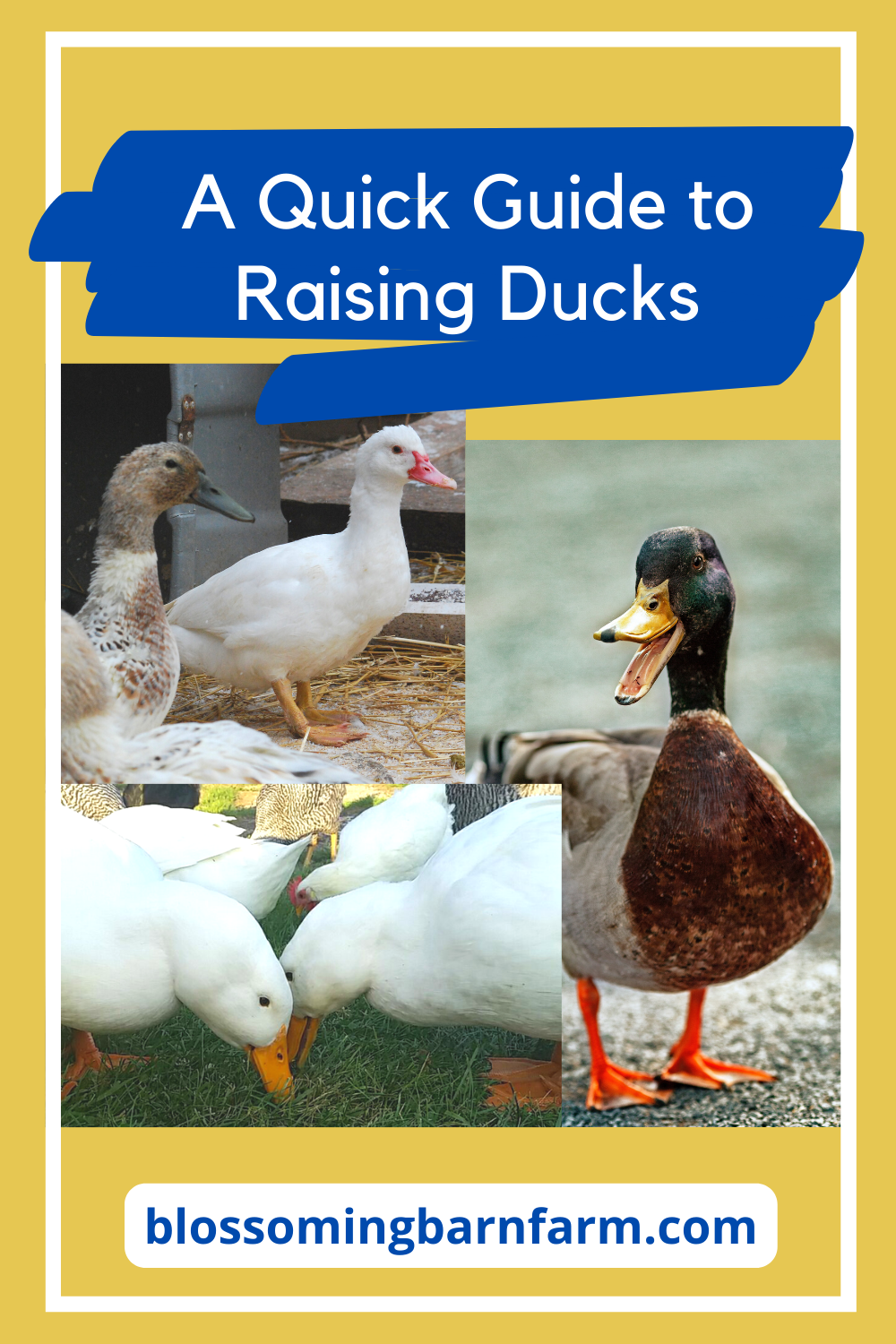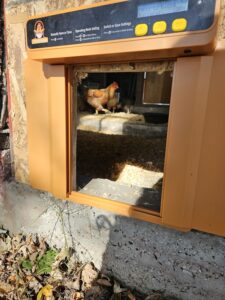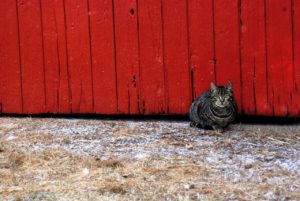Table of Contents
Ducks are a wonderful animal to add to a backyard flock or homestead. They produce delicious eggs, lots of meat, are fun to watch, and love to eat pests. If you’ve been dreaming about starting a flock of ducks, you’re not alone.
I know we’re all busy people, so I’ve put together a quick guide to raising ducks to get help you get your flock started. This guide will give you an overview of nutrition, housing, flock dynamics, health, and productivity.
Duck Nutrition

Food for adult ducks should contain 12-14% protein during non-playing times. Laying hens’ feed should contain 16% protein.
Ducklings have different nutrition requirements. To learn about duckling care, check out my Duckling Care Guide!
Besides protein, two other important nutrients to consider when choosing a feed are niacin and calcium.
Niacin, also known as vitamin B3, is a nutrient that plays an important role in turning macronutrients into usable energy for ducks and in the development of ducklings.
Ducks require higher levels of niacin than chickens. So if you are providing chicken feed for your ducks, consider feeding supplemental niacin. Good sources of niacin for ducks include peas, sweet potatoes, pumpkin, and nutritional yeast.
As you might have already guessed, calcium is important for egg production. Ducks use calcium to build strong eggshells. Laying ducks need a diet with about 2.9% calcium. Laying bird feeds contain some calcium, but it’s important to provide extra free-choice calcium.
Crushed oyster shells are a common calcium supplement. You can also feed eggshells back to your birds as a calcium supplement.
Feeding Amount
For many years, I fed my ducks free choice. That is – the ducks were allowed to eat as much feed as they want. But that’s not the ideal way to feed ducks. Not only will this increase your feed bill, but it can also cause ducks to become overweight.
If you decide to weigh out your ducks’ feed, adult ducks will need between .3 and .5 pounds of feed per day. Heavier weight ducks will need more food, while lighter ducks need less.
Creative Duck Feeds
While we’re talking about saving money on duck feed, let’s talk about creative duck feed.
There are tons of great ways to supplement your ducks’ diet to save money and add variety to their diet.
Some cheap ways to feed ducks are letting them forage, growing a duck garden, feeding fruit and veggie scraps from your kitchen, growing duckweed in a pond or stream, and growing worms or fly larvae
Ducks that forage can find up 20% of their own feed. And fly larvae are an easy way to provide high quality protein and calcium to your flock.
You can grow a garden to feed your ducks or feed them veggie and fruit scraps from your kitchen. Peas, leafy greens, beet and carrot tops, cooked potatoes, cooked beans, beets carrots, herbs, watermelon, cantaloupe, grapes, and others all make great duck food!
A quick note about feeding vegetables to ducks. Most legumes contain hemagglutinin which is toxic to birds. Kidney beans and green beans contain the highest level of this compound. Peas, lentils, and other legumes also contain hemagglutinin, but in lower amounts. Avoid feeding beans to ducks or cook them first to destroy the toxin.

Ducks and Water
There’s an old saying about ‘taking to it like a duck to water’. And there’s a lot of truth to that.
Ducks love water – both to drink and swim in.
Drinking water for ducks is simple, just make sure they always have access to clean water to drink. Also make sure that ducks’ water is deep enough to allow them to dunk their bills. Ducks clean their nostrils in water, so it needs to be as deep as their bills.
There are lots of containers that will work as duck waterers. But I’ve found that the best water feeder for adult ducks is a small livestock trough with a swim cover. Find out more in my Duck Tips article!
Swimming Water
And of course, ducks also love swimming water. Technically, ducks don’t need swimming water to survive. But ducks that have a swimming pool or pond will be cleaner, healthier, happier, and have higher fertility rates.
Ducks, especially heavyweight breeds, have a hard time breeding on land. They’ll have a much easier time properly positioning themselves if they have 8-10 inches of water to use.
If you don’t have a pond or lake on your property, kiddie pools work great! Hard-sided pools are best as ducks will pop inflatable pools. Ducks will also enjoy their pool more if you provide a ramp to get in. Ducks don’t like climbing over the sides of pools.
Duck Housing
One of the most important investments you’ll make to care for your ducks will be their housing. Housing protects ducks from severe weather, predators, and provides them with a secure and comfortable place to rest.
Duck housing can feel like an overwhelming project to undertake, especially if you don’t feel handy enough to build a coop.
But duck housing can be simplified down to three factors: space, safety, and duck preference.
Space
When you’re planning your duck house, make sure you have enough space for all the ducks you want.
Adult ducks will need about 4-6 square feet of space each in a coop. Additionally, ducks will need a minimum of 10 square feet of outdoor space. For the best results, give your ducks 100 square feet of outdoor space
Safety
The next consideration when building or buying a duck house is safety from predators and weather.
To combat most predators, make sure your duck house is built with solid wood or metal walls. Openings should be covered in fencing with no larger than ½ inch x ½ inch openings.
The above stipulations only apply to the ducks’ nighttime housing. If you just need to fence in their daytime yard, it doesn’t need to be as secure as it just need to contain the ducks during the daytime. The vast majority of predator attacks happen at night. If you have secure nighttime housing, you should have very few safety issues with your flock.
Another safety consideration is weather protection. As a rule of thumb, provide ducks with at least a three-sided shelter as a wind/rain break and enough shaded area for all the ducks to cool off in hot weather. If you live somewhere with cold Winters, providing a solid, four-sided building is smart. You might also want to consider an insulated duck house or a covered run.
Duck Preferences
The final consideration when planning a coop is what ducks like.
Unlike chickens, ducks don’t use or need roosting bars. Learn more about the differences between ducks and chickens!
Ducks are also less likely to use nesting boxes than chickens. But they certainly won’t mind if you add some nesting boxes to their coop. You’ll only need one nesting box per 3-5 ducks.
Ducks also dislike ramps. If you have a ramp or stairs in any part of the duck pen, make sure it has a gradual slope.
Ducks like deep bedding to nestle and make nests in. They also enjoy having enough space to get away from each other if they need to. Ducks will also enjoy a yard with a variety of plants and features. Ducks will enjoy areas of long weedy grass to forage in, and they’ll also love other areas that are wet and muddy.
Additionally, ducks need well-ventilated coops. Make sure to have enough windows, doors, and vents to allow for airflow in both the summer and winter.
Winter ventilation should be high in the coop to avoid cold drafts.
If your coop gets overly dusty, smells of ammonia, or the air just seems stale that’s a sign to add more ventilation.
Free-Ranging
I can’t talk about housing ducks without also talking about free-ranging.

You don’t need acres of pasture to free-range ducks. Ducks can free-range in your front yard, backyard, barnyard, or any other space that you have!
Flock Dynamics
How Many Ducks?
Ducks are highly social animals, and they should never be forced to live in isolation. No duck will be happy if it doesn’t have at least one other duck to socialize with.
A lot of beginner duck keepers make the mistake of keeping a solo duck, learn about more beginner duck mistakes.
Duck flocks are organized in a hierarchy. If one is available, a drake will typically be highest up. Other ducks will fall into line under that drake depending on age, size, sex, and temperament. Docile, passive ducks will fall lower in the hierarchy, while dominant, aggressive ducks will secure a place higher up.
Ducks use their hierarchy to decide which ducks eat, swim, and mate first. Higher ducks will eat and swim first, while lower ducks will need to wait. Likewise, drakes that are high up will get the first choice in mating with hens.
I recommend getting at least three ducks. This will provide insurance against lonely ducks if one duck dies.
Male to Female Ratios
Another important thing to consider is the male to female ratio in your flock.
Ducks are quite aggressive when they breed. Drakes will mate with hens several times a day, during which they climb on top of the hen and hold onto her head.
If you have too many drakes relative to the number of hens in your flock, the drakes will breed the hens too often. This can cause the hens to be injured and the drakes to fight.
To keep the peace in your flock, aim to have 1 drake for every 4-5 hens.
Though drakes can seem like a nuisance to your flock, they play an important role in protecting and watching over the flock.
Co-Housing Ducks with Other Poultry
A common question people have about ducks is if you can keep them with other poultry like chickens or geese.
The simple answer is yes, you can co-house ducks with other poultry. Ducks will live more harmoniously with other waterfowl like geese than land fowl. Simply put, waterfowl have similar habits and preferences, so they’ll live more happily together.
Land fowl, on the other hand do not enjoy the wet conditions that ducks do. They’ll also need to be provided with roosts and a dust bath. If you decide to keep ducks and land fowl together, you’ll need to make sure that the unique needs of both birds are met. Ducks will need a pool while chickens will need dry quarters. Chickens will need roosting bars and ducks will need a bedded coop.
Also, keep an eye on breeding if you have a mixed flock. When ducks mate, the drake’s penis penetrates the female. However, roosters do not have penises and chicken mating is only an exchange of fluids from the vent. Make sure drakes do not try to mate with hen chickens. Hens can be seriously injured if that happens.
Duck Health
Duck health is a large and complicated subject that I could talk about forever. Here’s a quick overview of common duck diseases.
Bumblefoot
Bumblefoot is a staph infection in the duck’s foot. It’s usually caused by dirty conditions or a small cut becoming infected. This can usually be treated at home – read more.
Coccidiosis
Coccidiosis is a disease caused by coccidia bacteria. Symptoms can include low appetite, lethargy, bloody stools, and diarrhea. This can be treated with a coccidiostat and easily prevented with good sanitation.
Hardware Disease
This isn’t a true disease, but rather a condition that occurs after a duck ingests something it shouldn’t. Ducks can easily ingest nails, bolts, nuts, string, wire, and other hardware from their yard. Symptoms and treatment will depend on the injury caused by the ingested hardware.
Wet Feather
Wet feather occurs when adult ducks are unable to keep their properly oiled and dry. Wet feather can be caused by excessively wet conditions, impaction of the oil gland, heavy mite infestations, and exposure to foreign substances that inhibit the feathers’ natural ability to repel water.
Lameness
Lameness refers to any limping or difficulty walking in ducks. This can be caused by injuries, infections, excessive weight, vitamin deficiency, or other diseases. Heavyweight ducks are more susceptible to lameness as their body weight adds extra strain to hip and hock joints.
Treatment varies by cause. Read more.
Niacin Deficiency
Niacin, also known as vitamin B3 is an essential nutrient for ducks. Often, chicken feeds do not contain sufficient niacin levels and can lead to niacin deficiency in ducks. Symptoms include weak legs, slow growth, and enlarged hocks. Niacin deficiency is usually easily treatable by adding extra niacin to feed.
Poisoning
Ducks can experience poisoning if they ingest pesticides, herbicides, rat poison, cleaning agents, fuel or oils, toxic plants, and others.
Treatment and symptoms will depend on the substance causing the poisoning.
Spraddle Leg
Spraddle leg is a condition that occurs in ducklings that are kept on slippery conditions. Slippery surfaces can cause ducklings’ legs to splay out to the side and cause difficulty walking. This can sometimes be treated with splints at home.
Read more.
Sticky Eye
Sticky eye is a condition that commonly occurs when ducks don’t have sufficiently deep drinking water and is sometimes caused by a nutritional deficiency. Affected ducks will have matted feathers around the eye.
This can usually be solved by providing deeper water for ducks to clean their heads in.
Other Diseases
Ducks are also susceptible to avian flu, cholera, botulism, oviduct prolapse, sinus infection, respiratory diseases, parasites, maggot infections, hepatitis, west Nile, streptococcus, and more.
I know I just rattled off a dozen or more disease that ducks can get. But please understand that most ducks are very healthy, and most duck owners run into very few serious health problems in their flocks.
Ducks are generally hardy, healthy animals. Good management and cleanliness practices will keep most diseases at bay.
In the six years I’ve owned ducks, I’ve experienced maybe two serious conditions in my flock. I’ve only had one duck die from a disease, and I decided to put her down.
Also, if you are raising ducklings, don’t panic if one or two ducklings die young. It’s not uncommon for ducklings to die. Most of the time there’s nothing you could have done better and nothing you did wrong. Ducks can be born with defects or just fail to thrive. So don’t beat yourself up if a few of your ducklings die and don’t jump to conclusions about a disease outbreak.
Duck Productivity
Unless you want a flock of ducks as pets, you’re probably in this for duck products. Ducks lay delicious eggs, provide lots of meat, and downy feathers.
Eggs
Female ducks will start to lay eggs at around five months of age. Most ducks will lay 4-6 eggs per week for the first two and half years of their lives. Duck eggs are large, delicious, and nutrient-dense.
Did You Know? Duck eggs are more nutritious than chicken eggs. Read more here!
Ducks tend to lay eggs anywhere and everywhere. I’ve found eggs in the coop, in their yard, in the pool, and out in the barnyard.
You can support good laying by providing a balanced layer ration with sufficient protein and calcium, lots of exercise, time outside, and a clean coop to encourage laying inside.
Read more about raising laying ducks.
Meat
Most ducks are ready to be butchered by 16 to 18 weeks old. Ducks provide all dark meat that is rich and fatty.
Large meat ducks can weigh 10 pounds or more and provide 8+ pounds of meat.
Ducks raised for meat should be provided a normal ration for most of their lives. For two weeks before butchering their feed can be increased and their movement somewhat restricted to help them fill out.
Read more about raising meat ducks.
Feathers
If you choose to butcher your ducks, you can also keep the feathers that you pluck. Downy feathers are valuable for filling pillows, duvets, coats, and more.
Read more about using duck feathers.
As you might have guessed, I really glossed over a lot of subjects in this article. The thing is, there is so much information that you could learn about ducks. Entire books worth!
But I wanted to give you a quick overview of the most essential ducks information that you need to get started with your first flock.
If you want to deepen your knowledge, I highly recommend Storey’s Guide to Raising Ducks by Dave Holderread. This 300+ page guide covers everything you need to know about ducks. This guide features information about many common duck breeds, genetics, rearing ducklings, raising adults, predator management, breeding, butchering, egg production, detailed information on dozens of diseases, detailed first aid information, duck recipes, and so much more!
Get it here! https://blossomingbarnfarm.com/storeysguideducks
Hopefully, you enjoyed this quick guide to ducks. Did you learn anything new from my article? Let me know in the comments below.
Happy Homesteading!








